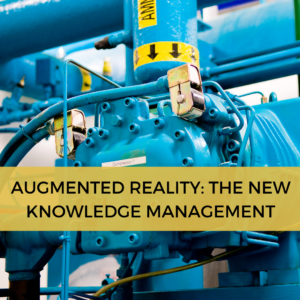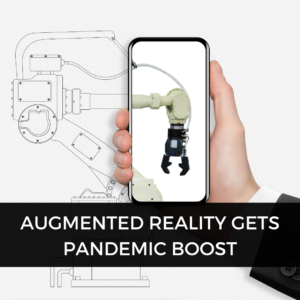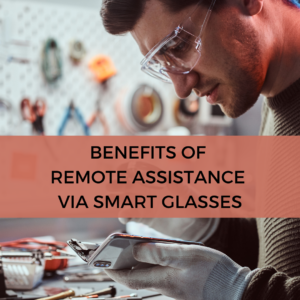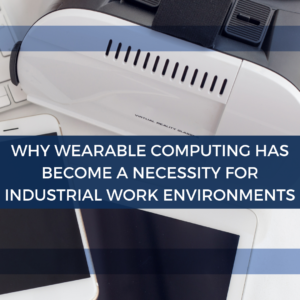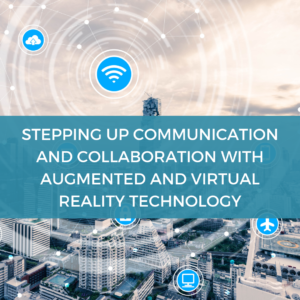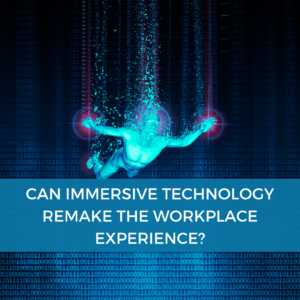The Power of Augmented Reality in Construction

The following AR use cases for construction are addressed in the article:
- Project presentation: Details and elements can be layered onto a building plan using AR. It can also provide tours and showcase 3D models. This allows both stakeholders and clients a clearer idea of the project, building, and any installations before it is made.
- Progress capture: AR can track and document the progression of projects. Applications can use a device’s AR features to identify what progress has been made so far with the floorplan, taking automatic shots of each capture point. This allows for better accuracy and efficiency in progress capture.
- Better collaboration: Teams can share 3D images and videos with off-site members using AR. Stakeholders can remotely view videos or images in greater detail, allowing for error identification.
- Enhanced safety: If tags or labels are placed in specific hazardous areas of a construction site, AR can scan them to bring up text or 3D models detailing safety information.
- Construction training: AR can assist educators with life-like demos to teach workers on using heavy machinery or complex equipment. This allows workers to see the equipment in action prior to arriving on-site. Hazardous materials or environments can also be demonstrated using AR, preventing team members being exposed unsafely.
Since AR use cases in construction already exist, Mixed Reality is considered the next step forward. MR combines both Augmented and Virtual Reality so that users can interact with digital elements while still being aware of their physical environment. Teams can collaborate better; they can interact with one another in the same physical room while conducting a virtual tour together. On site, MR allows workers to view instructions and information overlay for installation and repair support.
Despite AR adoption in construction being behind other industries, ARVR use in the construction industry is said to see “strong growth” in the upcoming five to ten years. The two drivers of AR adoption are said to be:
- Willingness of construction professionals to go through digital transformation
- Maturity of AR technology itself
Examples of AR being utilised in construction already are:
- Akular AR: This mobile app brings 3D models into the physical environment, allowing walkthroughs in the real world. The app offers a solution for construction firms to show life-sized 3D building models to stakeholders.
- GAMMA AR: This app uses AR to overlay 3D BIM models onto the construction site. Errors can be detected before construction, limiting mistakes and back-and-forth between team members. Models and designs can also be visualised before building. It provides a solution for presenting and sharing construction models, as stakeholders can avoid errors, communicate effectively, and make smarter decisions.
- Arvizio: AREA member Arvizio is an enterprise AR and MR solutions. Features offered by them include processing, optimisation, import, and hybrid rendering of complex 3D models and LiDAR scans for sharing digital twins with multiple users. Use cases from this include spatial data management, QA inspections, on-site model alignment, design reviews, and marketing demos. Stakeholders can conduct synchronised collaborative AR and MR sessions.
- ICT Tracker: This AR software company helps contractors to streamline project installation reporting and tracking. It is an easy-to-use, model-based production app that digitises iPad data in the field. The data collected is delivered in easy-to-read reports, improving project knowledge across the entire team. BIM or 3D models can be compared against current installations, eliminating the need for manual tracking. ICT’s capture of real-time data helps to understand installation status and identify production, cost, and scheduling issues.
- The Wild: This is a collaboration platform that offers support for BIM 360 and Revit. An entire team can be brought into a virtual workspace to spatially communicate, add markups, and review designs. VR headsets, mobile devices, or desktop can all access it. Design reviews can be remotely sped up and aligned throughout the process.
- VisualLive: A range of applications shift BIM/CAD power onto the construction site with VisualLive. There are AR and MR solutions on HoloLens 1 and 2, iOS, and Android, so design models can be brought onto these devices. Plugins with Navisworks and Revit allow users to bring CAD build BIM onto the jobsite.
The article concludes by acknowledging that AR will be a big part of construction in coming years. Companies must leverage the technology by finding opportunities to use AR in projects, and researching solution providers.

